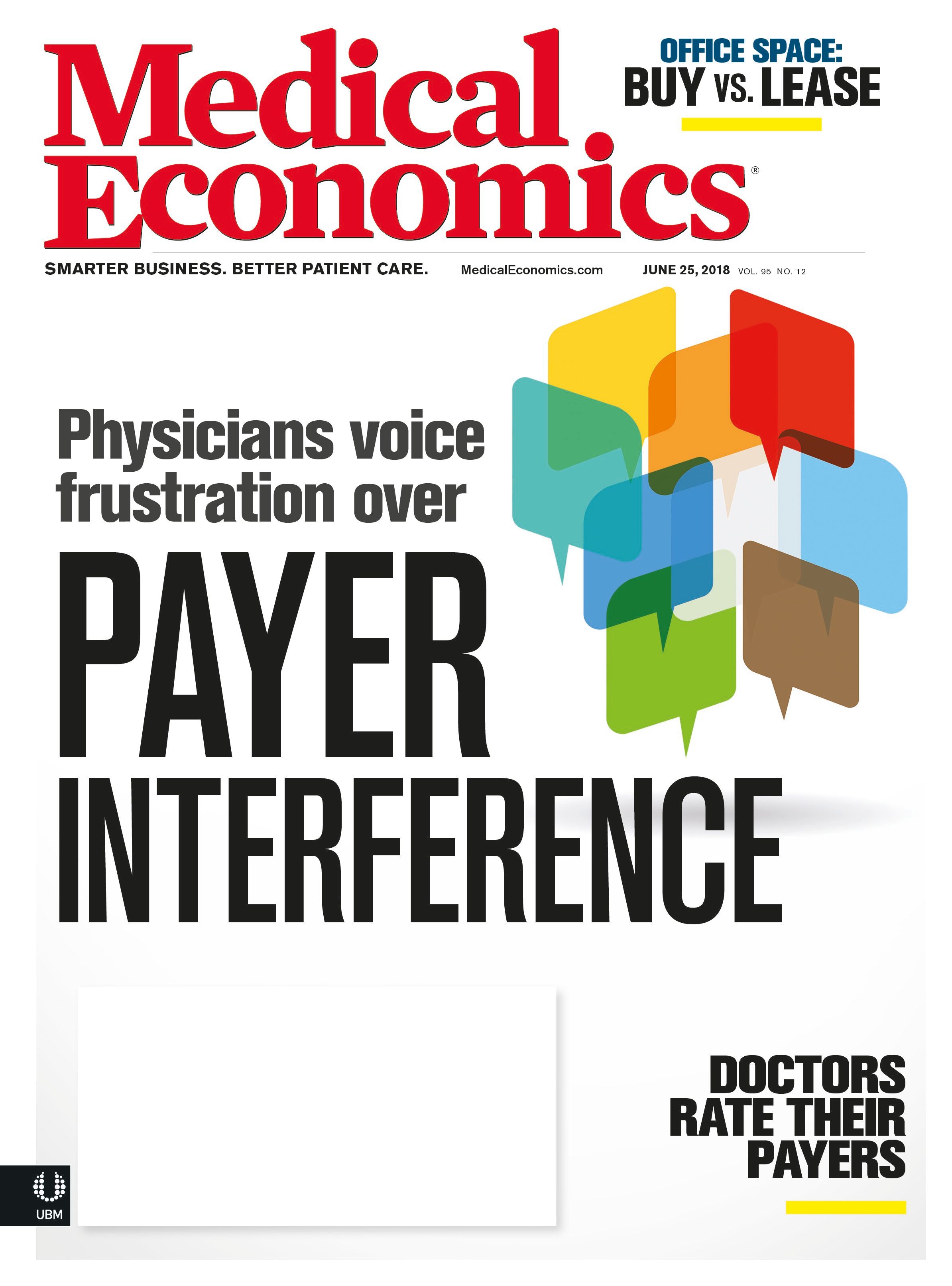Publication
Article
Medical Economics Journal
Physicians, patients should take on payer nuisance together
Author(s):
Both parties know it’s there. The physician knows about the intruder, as it likely affects their recommended course of treatment. And the patient knows as well, often sweating out the doctor’s advice and next steps, as the same question rattles around their head: “Can I afford this?”
By now you’ve figured out who the lurker is: the insurance company. That constant nuisance to both medical professional and everyday patient. The payer does have its value and is, after decades of evolution, a standard part of life we’ve all learned to live with. But that doesn’t make it less annoying.
And to add to the irritation of both patient and doctor (who are both asked to “control costs” before and after their interaction) the average health insurance CEO’s salary was $16 million in 2016, according to the SEC. That’s around $307,000 per week to intervene in the healthcare of America’s patients and second-guess doctors who’ve spent years in school and real-life experience.
I understand health insurance companies are businesses, but tell that to the doctor wasting precious time with patients to haggle over a prescription. The patient needs critical medication, but it isn’t “on the list,” so if they want it, they can pay out of pocket. And tell that to the patient, who often has to decide between groceries on a given month or medication that will assist-or in some cases save-their lives.
Healthcare has adapted with new models like concierge medicine and direct primary care, two ways to get that pesky payer out of the room once and for all. But every doctor in the U.S. can’t decide to dump payers, or else that would throw healthcare into a tailspin.
Patients need insurance to offset costs for their medical care. Physicians need payers as partners to get compensated for those treatments. At this point, there is likely no going back.
But physicians and patients should work together to drive change in how payers interlope in their relationship. The cliché “strength in numbers” is appropriate here as larger numbers tend to force change. Instead of suffering in silent silos, the two sides should be working together to unify their voices. Meet with legislators and suggest bills to better patient care. Hold press conferences side-by-side. Use social media to highlight and call out egregious actions.
It’s unlikely to reverse the obscene salaries of insurance CEOs, but true collaboration between our nation’s caregivers and payers’ customers can make some noise. And if there’s one thing payers hate more than seeing their bottom line slip, it is bad public relations-it’s not good for business.






